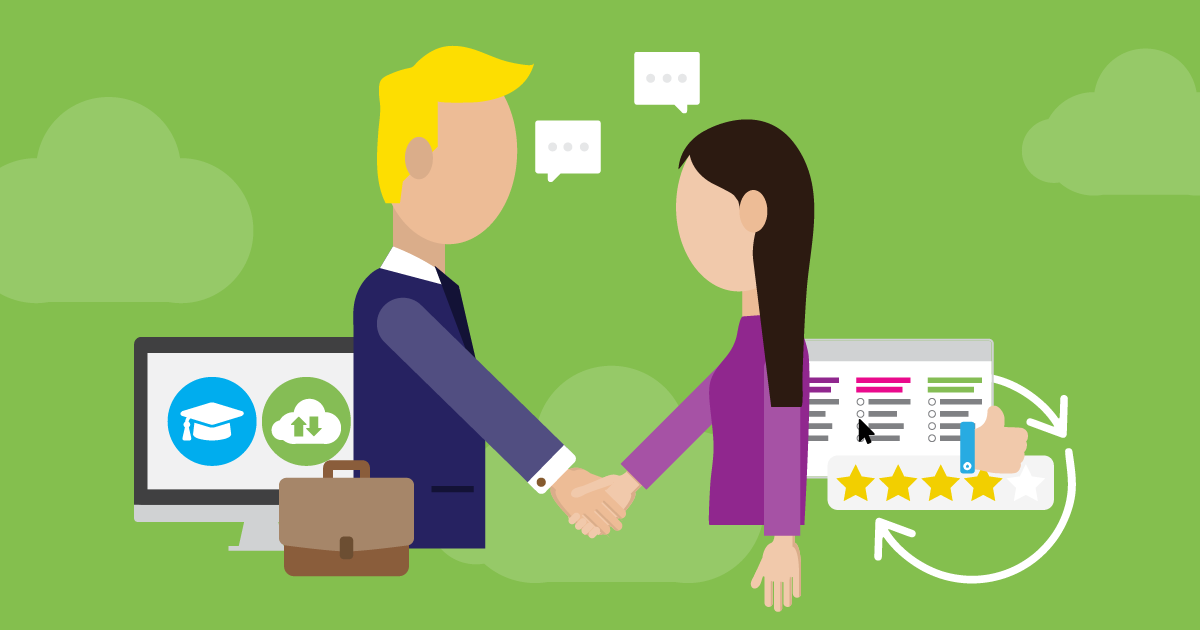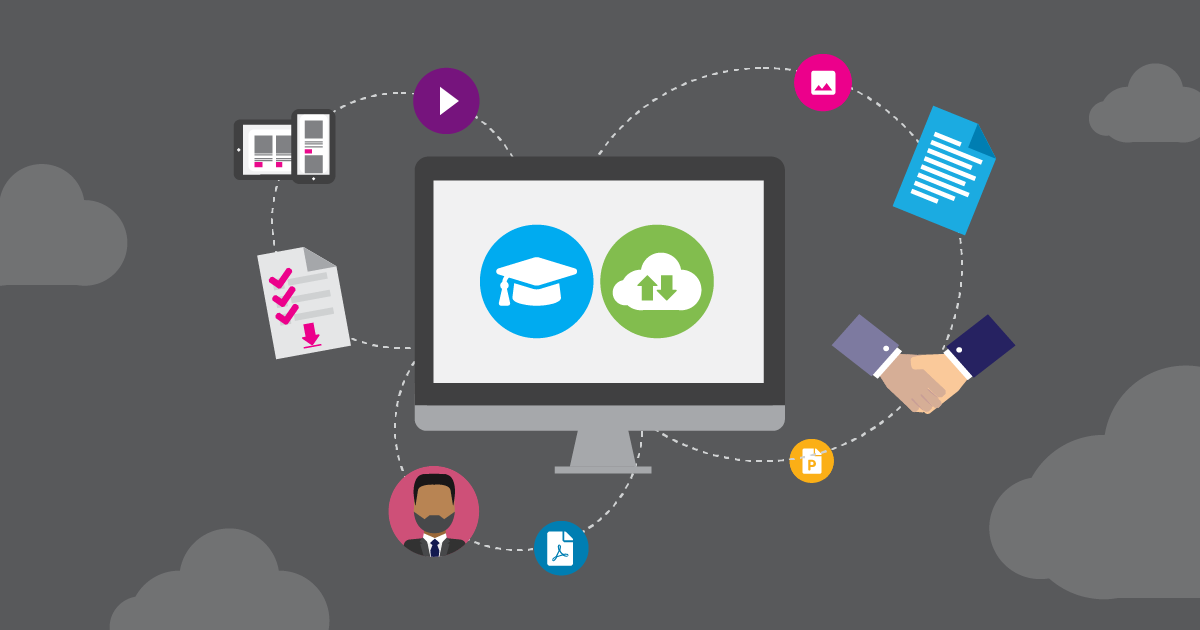If your organization wants to achieve long-term success, you’ll need to focus on delivering what your customers need rather than just selling to them.
Have you noticed a change in the way brands market to their consumers? In the 1990s, infomercials would preach product features and pricing discounts—but price and product aren’t a consumer’s only focus like they used to be. Rather, consumers are putting more emphasis on the overall buying experience and prefer to invest in companies with beneficial customer support processes.
For the most part, one-and-done sales is a thing of the past; focus on selling how consumers can benefit from continued business with you.
In fact, 73 percent of U.S. consumers say that customer experience is a very important factor in their purchasing decision—so much so that even if they love a company or product, 59 percent will still walk away after several bad experiences, and 17 percent will walk away after just one bad experience.
Dedicating time to nurturing a relationship with your customers can present major benefits for your business, including customer retention, loyalty and satisfaction, as well as repeated business that will pay off in the long run.
Nurturing Long-Term Customer Relationships
Nurturing relationships is a multi-step process—and the first step is establishing a sense of trust among your consumer base.
Establish a Sense of Trust
Customers hold your brand to a certain standard, and it’s up to you to meet that. Consider utilizing the following methods to help you build a sense of trust:
- Provide exceptional customer service. Demonstrating that your business is committed to customers and their interests lets customers know they’re going to be taken care of throughout their buying experiences.
- Share positive customer reviews. Word of mouth has a big influence on the way customers perceive your brand. In fact, 92 percent of B2B buyers are more likely to purchase a product or service after reading a trusted review.
- Be transparent in your marketing. Customers want the truth—and if your marketing isn’t being honest, it could hurt your brand’s perception.
- Allow customers to voice their opinion. Customers tend to trust organizations that believe their opinion matters. Try to find ways to let your consumers contribute and work to improve your business based on their insights.
- Have a team member accessible to field questions. Having a team or a representative available to answer any questions or handle problems that your customers are experiencing can go a long way to ensuring they’re satisfied.
Establishing a sense of trust between you and your customer can take time, so be patient throughout this process. By continuously showing your consumer base that you value them, they will return the favor as you both benefit from your continued relationship.
Foster Relationships with a Learning Management System
Your sales and customer service teams need to be highly skilled and knowledgeable in order to properly support customers. While you may assume that your team has the training necessary to interact with customers, a learning management system (LMS) can help fill any training gaps that may exist and keep employees updated on the latest standards, policies and procedures. Some LMS platforms even allow you to track an employee’s learning progress, so you can guarantee that all team members are properly completing the necessary training.
An LMS is an innovative way to directly improve your customer relationships and can be used as a competitive advantage to help your business stand out among the competition. Discover how your company can utilize an LMS to build more concrete relationships:
- Enhance your onboarding experience. Onboarding is often stressful for customers, as there can be a lot of information to process. By incorporating an LMS, you can create an onboarding experience that gradually introduces customers to your products or services and doesn’t overwhelm them all at once. This can go a long way to leaving your customers satisfied rather than tacking on stressful rapid learning.
- Offer continuing education (CE) courses. CE courses present valuable opportunities for customers looking to become or maintain certification in their field. Offering these courses can lead to stronger customer retention and ongoing engagement with your brand.
- Provide answers to frequently asked questions. Your customers don’t want to be confused or discouraged when using your product. Developing an in-depth training course can help educate your customers before they access your products and alleviate their feelings of frustration.
- Gather feedback on learning materials. Many LMS options are highly customizable, meaning you have the opportunity to cater to your audience’s desired needs. Offer customers the chance to provide feedback on your learning modules so you can better prepare for future courses.
Ensure that your LMS is well designed and thorough in its content, as a mismanaged LMS can hurt your customer relationships. Have a strategy in place prior to granting access to customers and ensure that your team is available to assist customers with any issues they may be having.
To learn more about how an LMS can be utilized to enhance your learning programs, check out our free eBook: Choosing the Right Content for Your B2B e-Learning Experience.
How Digital Asset Management Can Benefit Your Internal Teams
In many organizations, there’s normally a slight disconnect between sales and customer service teams. In reality, these two teams are more similar than you might think, as they both actively interact with consumers. If you’re going to build positive long-term customer relationships, you need to get these two teams in sync—and a digital asset management (DAM) platform can help achieve this. Through storing a variety of digital assets such as sales processes, important customer data and key product information, these two teams have access to the information they need.
Consider investing in a DAM with that helps improve efficiencies and can streamline your workflow. Not all DAM platforms are built the same, so choose one with the following features:
- Category-based search: Enable your team to sort through files quicker through advanced search options. Search for individual files or look up items by category or tag. When establishing your DAM, add categories to create filtered views and tags. These filters can save your team time in the office or out in the field with customers.
- Roles-based permission: Select and grant individual team members access to certain documents. This type of security can provide ease of mind and ensure that no one has access to anything they shouldn’t.
- File sharing: Similar to email, easily send or upload files for other team members to reference; however, file sharing through a DAM offers more efficiency and helps keep files more secure.
- Metrics tracking: The most powerful DAMs offer analytic tools that give you a firsthand look at what files are being shared or accessed the most. You can use this information to possibly incorporate other items into your messaging.
Nurturing customer relationships takes a lot of work. Ensuring that your team is equipped to best service your customers can help create more enjoyable customer experiences and establish a sense of trust in your brand.
Increase Your Customer Retention Rate
Did you know that 44 percent of businesses focus on customer acquisition, but only 18 percent focus on customer retention? It’s just as critical to maintain the relationships you’ve worked so hard build as it is to obtain them. Not only should you look to maintain relationships, but you should also look to improve upon them and ensure that you’ll always be a customer’s ‘go to’ for any products or services.
To help keep customers satisfied, try implementing an LMS, as this platform can be utilized to help with any follow up communication with customers and ongoing training. Consider building out a survey that allows customers to share honest feedback after completing a learning module. Is there a topic they would like to see covered? Is there a piece of content that they really enjoyed? How can your learning modules be adjusted for maximum value? Keep your customers engaged and maximize their satisfaction by continuing the conversation with them.
A DAM can also be leveraged for customer retention initiatives. A DAM holds great value as it keeps customers organized and houses a plethora of data. Giving this up means starting from scratch with another platform and possibly misplacing a document. Tying into this point, think if there’s any possible way to make the customer’s task easier. Utilize their voice and make any changes deemed necessary to your DAM.
By showing that you value your customers, they’re more likely to engage with your brand in the future, as well as recommend you to other customers. Remember, when building positive, lasting relationships, it isn't about you—its about the customer.
How Konvert™ Can Help
Konvert™ combines the power of LMS and DAM platforms, enabling you to create custom experiences for your customers. With Konvert, you have the ability to make your customers feel special and start to build a positive relationship with them.
Our LMS lets you quickly and easily create and manage training modules tailored to your desired audience. Organize your content into courses, chapters, quizzes or even make it downloadable. Plus, our DAM makes it easy for customers and prospects, as well as internal teams, to store, manage and retrieve digital data with intuitive search and tagging and filtering options.
Contact us today to learn more about how you can build strong customer relationships.

